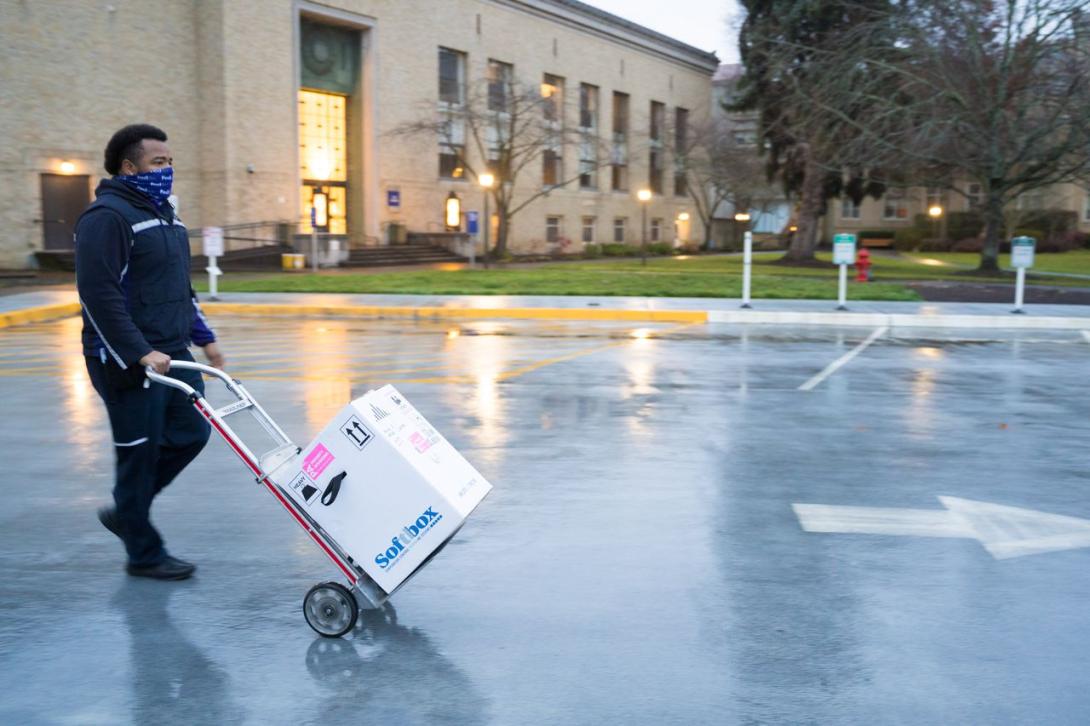
After sharp financial drops and surges since the onset of the COVID-19 pandemic, Oregon Health & Science University expects more stability this year, forecasting that its revenues will increase rise 6% in the fiscal year starting July 1 and that it will be able to squeeze out a modest profit of about $38 million, or 1% of revenues.
In a report to OHSU’s board of directors, Chief Financial Officer Lawrence Furnstahl somewhat tempered his forecast with the news that OHSU in February recorded its first monthly loss -- $8.4 million -- for the fiscal year, which started last July 1.
Still, Furnstahl said OHSU is emerging from the pandemic looking financially solid, in part due to earnings from its hoard of cash and investments, which stands at roughly $3.6 billion. OHSU’s net worth is up $284 million in the past eight months, due in large part to strong investment returns, Furnstahl wrote.
For the fiscal year through February, OHSU operating profits are $41 million, even after spending $23 million to restore pay cuts imposed on 4,500 faculty and managers last summer, Furnstahl wrote.
February’s loss was due to “a combination of lower patient revenues and higher costs, including the impact of a significant increase in behavioral health (patients), difficulty filling nursing positions and the month’s ice storms,” he wrote.
The expected increase in revenues for the fiscal year starting July 1 will provide $215 million, which Furnstahl said will go to covering pay and benefit increases, more hiring, more supplies and more capital spending.
But the COVID-19 pandemic continues to make itself felt.
Fewer Beds, Nursing Shortages
Revenues from patients have “softened” recently, reflecting not a lack of demand, but of the supply of available beds, Furnstahl wrote. Thirty beds in double rooms are closed due to COVID-19, and “nurse staffing shortages have reduced ICU beds by eight and limited (operating room) and (surgical) capacity,” he wrote.
Aggregate patient activity -- a matrix of inpatient, emergency, surgical and other cases – is down 2.8% for the fiscal year to date, compared to the previous fiscal year to date, he wrote.
Furnstahl wrote that his staff is still working on the budget for the coming fiscal year, with revenues tentatively set at $3.7 billion, which would be a record for the institution. The preliminary profit figure of $38 million is modest by OHSU’s standards.
Meanwhile, Derick Du Vivier, OHSU senior vice president of diversity, equity and inclusion, is slated to update the board at its Friday meeting on plans to accelerate anti-racism.
“OHSU has begun an aspirational and intentional journey of organizational transformation to advance anti-racism and multi-culturalism within its community and in the region by promoting fair and just treatment in the education, research, scholarship, clinical practice and community services missions, as well as the equitable access to business, services and employment,” Du Vivier wrote to the board.
Du Vivier said that OHSU is “in the process of bolstering our capacity to actualize this work by adding key new roles dedicated to building out a multi-year strategy that is under design.”
Among other achievements thus far, OHSU has testified to state lawmakers in support of Senate Bill 398 which would make it a crime to display a noose on public property “with the intent to intimidate another person,” the report said.
OHSU has faced years of complaints from Black employees over bias, including repeated incidents involving nooses or images of nooses. Investigations of noose incidents have either found no culprit or led to no one being fired. Last year, Black employees sent a letter to the administration that accused OHSU of enabling racism.
OHSU Implementing Anti-Racism Plan
Du Vivier wrote that OHSU’s Human Resources staff “has continued implementing an anti-racist plan of action informed by engagement with employees of color. He said this work is ongoing and isfocused on areas such as data collection, the well-being of BIPOC employees, cultivating diverse leaders through mentoring and career development and debiasing the hiring process with the aim of improving the recruitment, retention and advancement of employees of color.”
Nearly 20% of OHSU's staff and students are minorities, according to a 2019 fact sheet. That includes 9% who are Asia and nearly 6% who are HIspanic or Latino. Only 3% of OHSU's employees are Black.
Du Vivier’s report, dated April 9, doesn’t specifically mention OHSU’s contracting late last month with Eric Holder, attorney general in the administration of President Barack Obama, to lead an investigation of complaints about gender and racial discrimination and sexual harassment.
In announcing the decision late last month, OHSU's president and board chair said OHSU needed a well-respected investigator to help the administration create an anti-racist and inclusive culture that was free of harassment.
OHSU leaders said the move to hire Holder, of the Washington, D.C. law firm of Covington & Burling, was prompted in part by a federal lawsuit filed earlier in the year by a former OHSU employee against the institution and a former OHSU anesthesiology resident, Dr. Jason Campbell. That suit accuses Campbell of sexually attacking the complainant, and alleges the institution fosters a culture that covers up harassment, protects the culprits and retaliates against victims who complain. OHSU has denied the allegations.
OHSU has yet to respond to a Lund Report request for the contract and agreement amount.
You can reach Christian Wihtol at [email protected].

